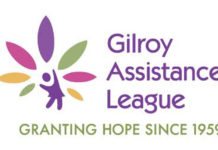District officials could soon require Gilroy high school
students to volunteer
– whether they like it or not.
District officials could soon require Gilroy high school students to volunteer – whether they like it or not.
Gilroy Unified School District trustees will vote on a community service graduation requirement at an August board meeting. However, the number of hours required and when the new prerequisite for graduation would go into effect are still up in the air.
Assistant Superintendent of Educational Services Basha Millhollen, who headed up a community service committee of high school principals, community members and teachers, said participants’ feedback was mixed.
“We had one member who doesn’t want community service at all,” she said. “And we have one who wanted kids to do community service all day every day.”
As a mother and an educator of 25 years, Millhollen experienced firsthand how community service impacts children.
“The value in community service is helping adolescents and students think outside of themselves for a moment,” she said. “Teenagers tend to be very self-focused because there’s so much to get done in high school. Volunteering really helps them to see there’s a bigger world out there.”
The requirement will not only produce more well-rounded Gilroy graduates, but also enrich graduates’ college resumes, said trustee Fred Tovar, an assistant director of admissions at Stanford University.
“We’re going to help those individuals succeed and get into college,” he said during a June 18 board meeting. “We are giving individuals a step ahead when it comes to college applications.”
Although trustees were enthusiastic about ratifying the new requirement, some expressed concern about the slew of paperwork that will accompany the process and the possibility that the new rule could be a barrier to graduation. To avoid the surprise factor, administrators plan to begin promoting the requirement, if passed, often and early. Trustees tossed around the idea of making the community service requirement voluntary for the incoming freshman class as a transitional year, followed by mandatory service in the following years, with the class of 2014 as the first graduating class to go through the program in its entirety.
“There have to be enough supports in place so that everybody knows this is happening well before graduation,” Millhollen said. “There will need to be checkpoints and we’ll have to do a lot of front loading. If not, we’ll have kids falling off and we don’t ever like to deny graduation to kids who have met the academic requirements. It’s all about how you build it up.”
Flores agreed that a “gearing up year” would help familiarize students with the new requirement and prevent last-minute scrambling to fulfill the community service quota. Flores previously headed a district in Southern California with a student service component as a prerequisite for graduation and faced the unpleasant job of dealing with students who put off their hours until the last minute, she said. While most students spread their hours over the course of their four years, a handful of students never failed to procrastinate, Flores told trustees.
“Some have to be threatened with not walking to get it done,” she said.
Flores could not, however, recall an instance where a student who met the district’s academic requirements did not complete his or her hours in time to walk with the graduating class.
As a member of Gilroy High School’s leadership class, student board member Mark Foley already completes 10 hours of community service each quarter and gained an invaluable experience volunteering at schools and hospitals and picking up garbage on Monterey Street.
“Getting out there and getting involved has definitely had a positive effect on me,” he said, adding that GHS’s student leaders would work closely with district administrators to get the word out.
Trustees plan to solidify the number of hours required, when the requirement would become mandatory and whether seniors graduating before the class of 2014 would be responsible for completing a portion of the requirement for graduation at an August board meeting. Board members also need to decide whether students with extenuating circumstances will be able to opt out of the requirement, a proposal trustee Mark Good frowned upon.
Millhollen first brought up the option of opting out, but she too acknowledged the value of service in every child’s life. During her years working with at-risk students, Millhollen encountered children who took to the service requirement with varying degrees of enthusiasm, and even though some would try to get out of their hours, “we wanted them to be a part of it no matter what,” Millhollen said. “It was incredible to share with children who felt like they had nothing circumstances that showed them they have something.”
Quality control also plays a major role in a successful, effective program, Millhollen said. Trustees said they wanted children to really experience their communities through service – not just go through the motions.
“We don’t want it to be about people writing down hours but the experience of volunteering for quality organizations,” trustee Rhoda Bress said.
Using districts who have successfully implemented a community service requirement, such as Newport Mesa Unified School District, as a model, Gilroy will likely designate the duties of monitoring community service hours to a particular staff member and produce a list of authorized charities to which students can donate their time. Several Newport Mesa administrators did not return phone calls for comment.














